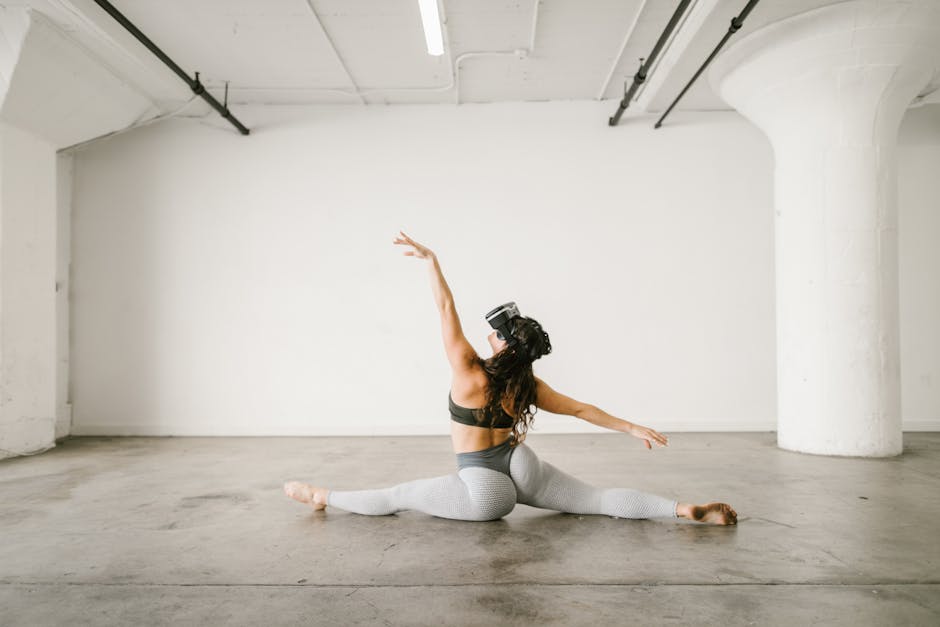The Gamified Athlete: Evolving Traditional Sports through Esports Insights
In an era where sports training is undergoing profound changes, the fusion of traditional athletics and esports principles is a revolution in the making. This blending, often referred to as the "gamification" of sports, is reshaping how athletes approach performance, strategy, and mental conditioning. Imagine a world where the rigorous practices of physical sports are informed by the dynamic, fast-paced universe of esports—it's a captivating idea that is not just theoretical; it's happening right now.
As we delve into the transformative impact of esports on traditional sports, we'll explore how gamifying athletic training enhances not only performance but also athlete wellness and team dynamics. This convergence of two seemingly disparate worlds—esports and traditional sports—creates an enriching environment that champions innovation, engagement, and growth in athletic endeavors.
Understanding Gamification in Sports
Gamification, in essence, refers to incorporating game-like elements into non-gaming contexts. This approach aims to improve engagement, learning, and performance. Traditional sports have effectively employed gamification techniques for decades, whether through drills, competitions, or training analytics. Today, the influx of data from esports is adding a new layer of complexity and depth, enhancing the way athletes train and compete.
Esports, particularly characterized by its need for quick decision-making, strategy formulation, and teamwork, presents key lessons for traditional athletes. The use of leaderboards, rewards, and real-time analytics common in gaming is making its way onto training grounds and locker rooms across the globe, influencing everything from mental resilience to physical readiness.
The Rise of Data-Driven Performance
The integration of data analytics from esports to traditional sports cannot be overstated. Athletes are increasingly relying on wearables and performance analytics, tools initially honed in gaming spaces. An insightful study from Harvard Business Review highlights how predictive data analytics has become a critical component in refining sports strategies and athlete recruitment.
In traditional sports, this means gathering vast amounts of data—heart rates, movement patterns, and even cognitive load statistics—to create tailored training regimens. For gamers, these practices are second nature, as understanding your stats and gameplay mechanics can dictate victory or defeat. Tools previously reserved for franchises like eSports teams, which analyze player statistics for performance improvement, are now being adapted by conventional sports teams looking to stay competitive.
Bridging the Gap: Training Techniques from Esports
Consider the training regimen of a basketball player. Beyond physical drills, players might engage in virtual reality (VR) simulations that refine their decision-making. This is akin to how professional gamers practice strategies through virtual matches, analyzing their gameplay to improve future performance. The marriage of this training philosophy with traditional sports could redefine performance enhancement. VR and augmented reality (AR) applications are now being used to visualize plays, enhance spatial awareness, and stimulate competitive environments without the physical toll.
However, it's not just about the tech; it’s about a mindset shift. Coaches and players are beginning to embrace a more educational approach to training. With the rise of cognitive coaching, which leverages insights from sports psychology and neuroscience, athletes are being encouraged to engage their minds as vigorously as their bodies. The implications here are vast, including improvements in focus, reaction time, and stress management.
Mindset Matters: Shifting Culture in Athletic Training
For many, the most significant change instigated by esports principles is in the athlete's mentality. In identical fashion to gaming, resilience and adaptability are now the buzzwords in sports psychology. Teams are increasingly investing in mental conditioning coaches who specialize in in-game psychology—a practice that is all too familiar in top-tier esports organizations, where mental breakdowns can lead to catastrophic loses.
In fact, many mental health strategies gleaned from esports are being integrated into traditional sports training. Athletes are encouraged to speak openly about mental wellness, fostering an environment where coaches empower their players to prioritize mindset as much as physical prowess. This shift can yield unprecedented levels of performance when athletes feel supported and understood, both emotionally and psychologically.
The Team Dynamic: Collaboration over Competition
Traditional sports teams have long traditionally rivaled each other, but the collaboration innate in esports can inform a new approach to team dynamics in sports. Gamers often develop a deep connection with their teammates, emphasizing communication and cooperative strategies. This model of teamwork is something athletes in conventional sports could replicate to cultivate stronger bonds within their teams.
As teams implement gamified strategies, they may find that the shift to cooperative training sessions fosters a sense of unity unlike anything seen before. Consider community-building exercises—rooted in the camaraderie frequently observed in esports—that emphasize support over competitive tensions. As shared in an insightful article on sports psychology, emotional intelligence and team cohesion directly correlate to on-field success.
Exploring Mental Resilience through Esports Frameworks
Mental resilience—a critical component in both gaming and traditional sports—plays a vital role in athlete performance. This aspect is especially crucial in high-pressure situations, where every decision can pivotally alter the outcome. Esports athletes are trained to quickly adapt when the game changes—a skill that can be taught and learned in traditional sports through the application of similar principles.
Training modules focused on cognitive flexibility, as espoused by gaming methodologies, push athletes to think outside the box and adapt to fluctuating on-field dynamics quickly. Workshops that integrate real-world scenarios enhanced by virtual simulations can equip athletes to react effectively during high-stakes matches or games. Building this mental resilience can profoundly shape an athlete's morale and confidence, both in practice and competition.
The Role of Technology in Shaping Athlete Experience
As technology continues to evolve, athletes are experiencing training in ways that were once unimaginable. The rise of artificial intelligence (AI) and machine learning is streamlining analytics and personalized training regimens. Traditional sports are not just borrowing from the esports world; they are innovating upon these technologies to create a distinct identity.
By employing AI, teams can analyze player performance, injury risks, and even predict outcomes based on historical data. Coaches and athletes alike are looking toward data models that reflect successful patterns, reminiscent of esports analytics. Innovations like biofeedback technologies are becoming commonplace, transforming how athletes understand their bodies and improve performance—particularly in injury prevention and recovery.
The Future: Merging Worlds of Sports & Esports

Looking ahead, the boundaries separating esports and traditional sports will continue to blur. As game design and delivery methods evolve, traditional athletic frameworks will adapt to incorporate gamified elements, ensuring both physical athletes and gamers can coexist and thrive. Teams that remain open to these integrating philosophies stand to gain a competitive edge, attracting new talent and expanding their fan engagement metrics.
Esports arenas are increasingly becoming commonplace venues for major traditional sports events, creating a multifaceted environment where diverse skills and backgrounds merge. For athletes, this is an opportunity to embrace the gamified principles that esports embody—recognizing that their learning journey, characterized by both competition and collaboration, is key to future success.
Final Thoughts: Embrace the Transformation
The intersection of esports and traditional sports presents a remarkable opportunity for athletes and teams alike. By embracing gamification strategies such as data analytics, mental resilience training, and team dynamics rooted in collaboration, traditional athletes can elevate their performance to new heights. As technology continues to innovate training methods, it’s clear: the future of sports is not only in the fields and courts but also in virtual spaces where strategy, collaboration, and performance converge into an exciting new frontier.
It's time for athletes, coaches, and organizations to reimagine what training looks like. Embracing the gamified evolution of sports is not merely about keeping pace with trends—it's about shaping a vibrant, competitive, and ultimately, more human-centered athletic culture. By merging the worlds of esports and traditional sports, we can unlock a future where every athlete—regardless of discipline—has the tools, support, and mindset to reach their full potential.










